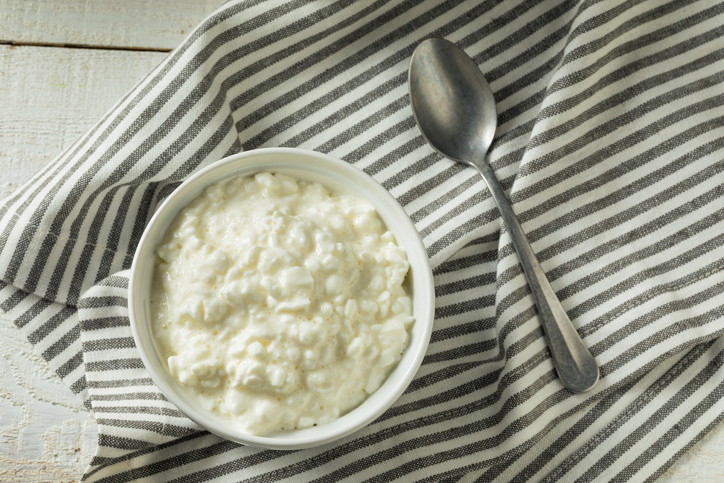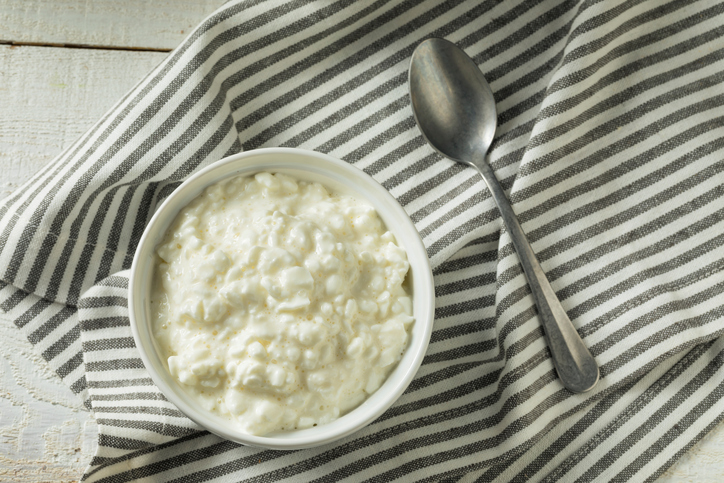A lot of cheeses are named after their points of origin—Cheddar, Roquefort, and Colby are named after places in England, France, and Wisconsin, respectively. Other cheese names are a bit more complicated.
Cottage Cheese
It’s the most familiar and commonly consumed form of cheese curds (at least in the United States). What are curds? Coagulated chunks of milk proteins that came together due to the addition or presence of an acid, such as rennet (which naturally occurs in sheep stomachs) or vinegar. Curd based cheeses date back to ancient times, but cottage cheese as we know it, in name and form, originates in 1830s England, when dairy farmers made curd cheese in their homes, or cottages, with dairy waste left over from making other products elsewhere on the farm, such as butter.
Monterey Jack
This mild, semi-hard white cheese is only partially named after its birthplace. In the mid-19th century, Franciscan friars stationed in central coastal California (near the settlement of Monterey) created the bland cousin of Cheddar. That’s when Scottish immigrant and entrepreneur David Jack entered the picture. He came to California in the 1840s to work as a military contractor (among other things) and got so rich that he bought up most of the land in Monterey County, including the dairies who were by that time producing the friars’ Monterey cheese. He decided to nationally market the cheese with his own name attached, first as Jack’s Cheese, and then the classier sounding Monterey Jack.
Mozzarella
Mozzarella is as Italian as the thing to which it most often contributes: pizza. In the Neapolitan dialect (as in from Naples, where pizza has a rich history) of Italian, mozza means “to cut.” That reflects how mozzarella is made. Cheesemakers mozza, or rather cut, curds and shape them into balls, which is how traditional mozzarella is sold.
Cheez Whiz
This shelf-stable (before opening) cheese-like brick is a famous example of processed cheese. When it was first mass-marketed, Kraft named the melty, queso necessity “Velveeta” to imply that it was smooth and silky…just like velvet. (But with a far more pronounced cheesy taste.)









